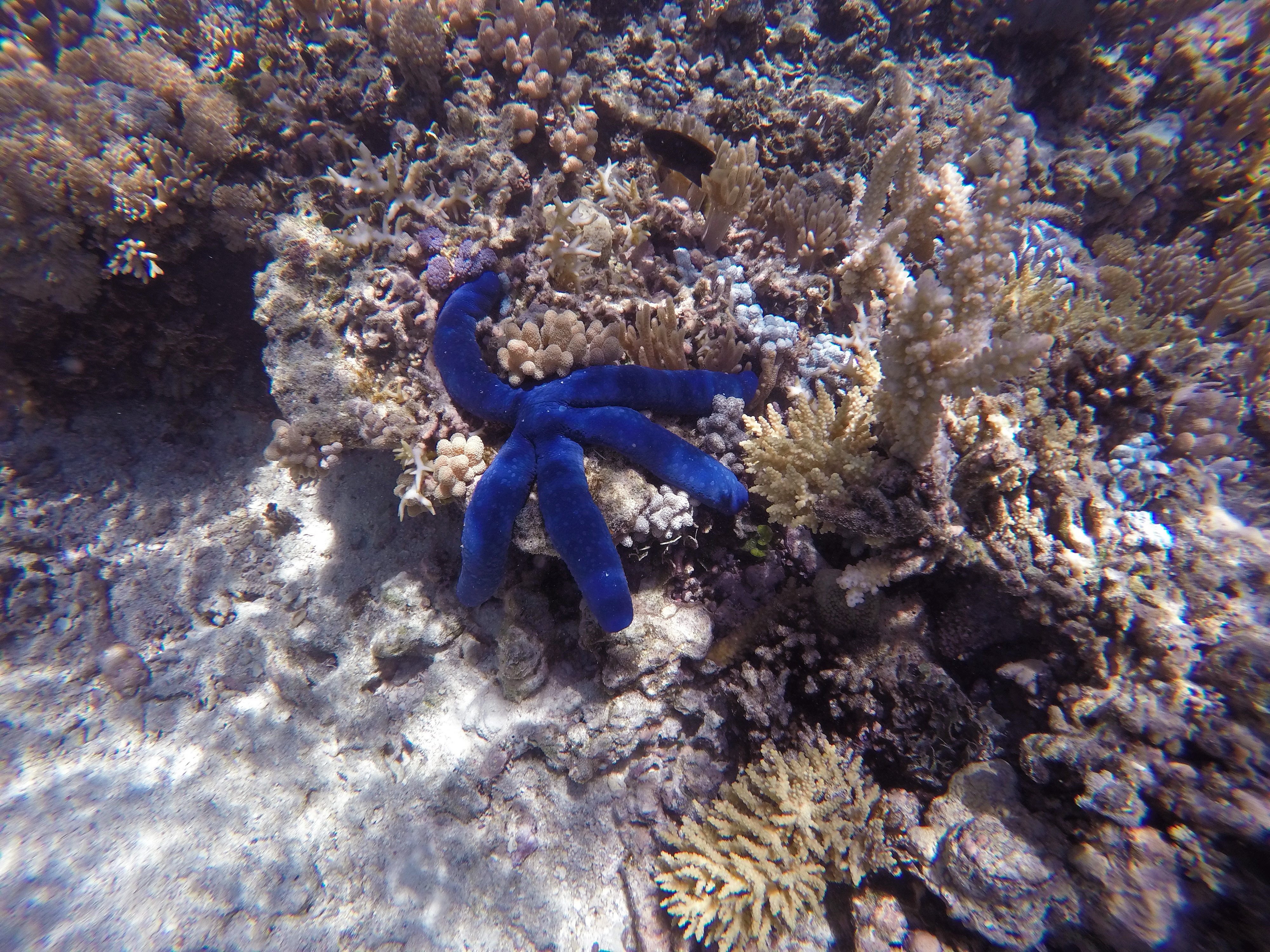Whitsunday Star Fish
Starfish, which are more properly known as seastars, are a favourite of both local and passengers who get to snorkel and swim among the fringing reefs of the Great Barrier Reef Marine Park.
There are many types of seastars that reside around the islands that come in many colours, shapes and sizes. Contrary to popular belief, not all seastars have 5 arms in a typical star fashion. Some of them have many more arms and grow in many different ways. Most species can lose limbs and grow them back, even growing two separate halves if they are cut into two pieces, forming two seastars, rather than one.
Pacific blue seastar
The pacific blue seastar is the most likely type of seastar that you will spot in the Whitsundays. They are a bright blue colour and usually have 5 arms in the shape of a star. As starfish, they are able to lose limbs and regenerate them, meaning some of the time they may have mishappen shape, less or more arms than normal. They can grow up to 30cm in diameter and move around using tubes located on the bottom of their arms. They feed on debris they find on the ocean floor, including decaying matter, and move very slowly along the ocean floor in search of food.
Crown Of Thorns Starfish
The crown of thorns starfish is another common type of seastar you may spot during your time in the Whitsundays. This solitary species is the second largest sea star in the world, and can reach up to 35cm in width, and have up to 21 arms. They are a nocturnal species, and usually come out at night to feed. Their main source of nutrients are coral polyps, which they strip of the corals that live in the reef. For this reason, they have become a problem for existing ecosystems, as they can eat too much of any one coral, causing destruction to the reef. They have few natural predators and are extremely venomous, meaning humans have to intervene in order to keep their species under control. If a human comes into contact with one and gets strung, they would notice a discolouring of the skin and if the spines happen to have broken of in the wound, may cause further infection.













